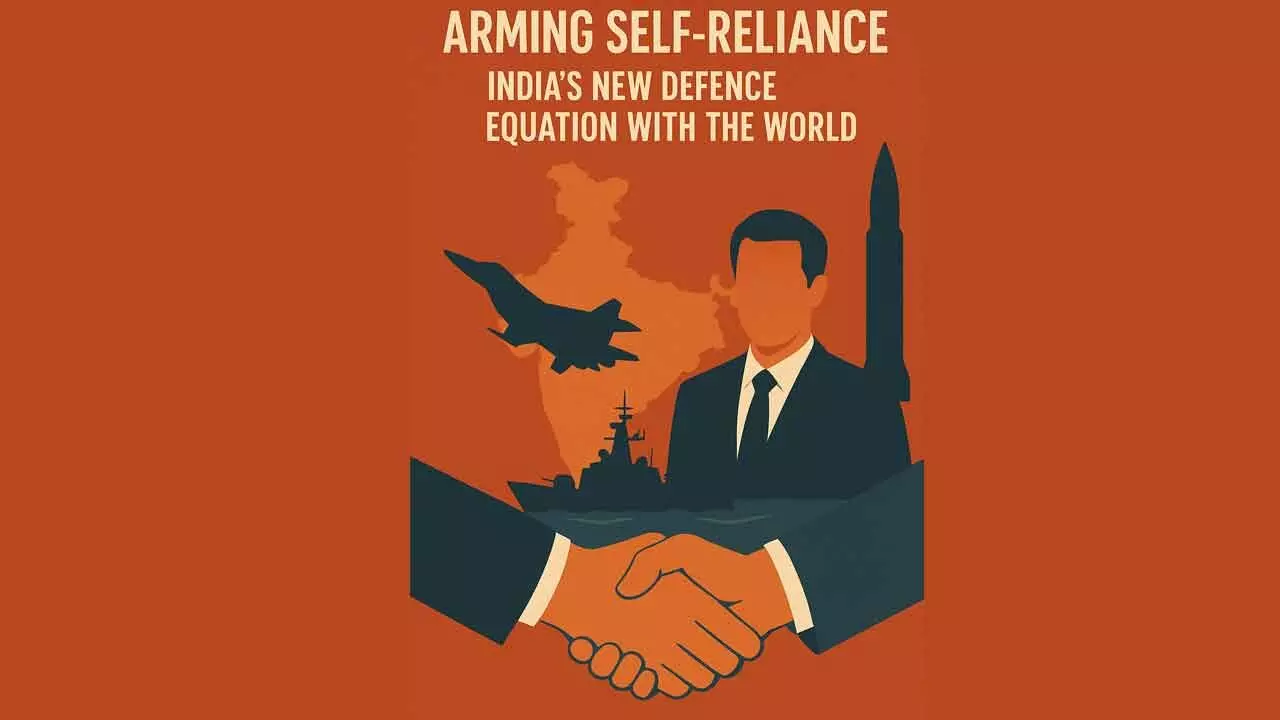Is arming self-reliance with foreign firms advisable for Indian Defence?
Strategic partnerships and foreign tie-ups are reshaping India’s defence landscape — marrying global technology with national ambition; It also raises complex question with arguments for and against it
Is arming self-reliance with foreign firms advisable for Indian Defence?

Whether India should encourage foreign companies in defence is a complex question with arguments for and against it. Encouragement can lead to technological transfer, improved quality, and increased investment, but concerns exist about national security and over-reliance on foreign entities.
The government’s current policy seeks a balance through measures like liberalizing FDI limits, while also emphasizing indigenous production and joint ventures to build self-reliance.
In recent years, even as other aspects of the Indo-US relationship have been lagging, collaborative defense initiatives have been on the upswing.
As the world’s largest defence importer, India has signed deals to purchase C-17 Globemaster and C-130J transport aircraft and P8-I naval surveillance planes from US companies. Total Indian defense purchases from the US now total almost $10 billion, a remarkable increase from a zero base in the early 2000s.
Recent geopolitical dynamics, regional conflicts and related national security concerns have made the Indian defence sector ripe for additional growth and investment. As technologies evolve and new forms of warfare emerge, this growing sector is likely to witness further transformation in India, driven by immediate and long-term security threats, significant policy reforms, an ambitious modernization agenda, and a strategic imperative for self-reliance—along with necessary global collaborations involving foreign Original Equipment Manufacturers (OEMs) and strategic alliances with key international allies.
India’s proposed reform measures in the defence industry, including potential amendments to the legislative and regulatory framework (see here and here), together with rising domestic demand and increased focus on exports, innovation, indigenization, emerging technologies, research and development (R&D), and strategic international partnerships, are likely to provide new opportunities for private and foreign participation in the sector.
Foreign companies can pay workers in India less than they pay in their home countries. Companies can save money on housing and other additional expenses for workers. Companies can cut costs by using lower safety measures and working conditions. India is a large market for foreign companies to sell their products.
Recent news reports indicate that in the aftermath of Operation Sindoor, India’s ministry of defence (MoD) is likely to receive an allocation of Rs500 billion, in addition to the Rs6.8 trillion already allotted in the union budget of February 2025—where the MoD received the largest sectoral share, with Rs1.8 trillion earmarked for capital outlay, including capital acquisition for the armed forces, along with capital expenditure on R&D and creation of infrastructural assets.
Moreover, the Government of India has articulated its ambitions to scale up the quality and quantity of local production, along with export targets. There appears to be a growing appetite for higher budgetary allocations, equipment modernization, technology-related investments, and technology-first procurement—including through existing and emerging geostrategic opportunities involving countries such as the US, France, Israel, and Russia.
Conflicting pressures may lead India to recalibrate its existing international relationships in respect of defence purchase and procurements, including on account of ongoing uncertainty in global trade dynamics.
French software maker Dassault Systemes is expanding its India presence with increasing investments, headcount by 10 per cent and new Pune facility in the country taking the business here to $1 billion in the next five years, according to its global CEO Pascal Daloz.
The convergence of defense innovation and economic nationalism is transforming how India interacts with the global order, not merely as a buyer of the latest goods, but as a manufacturer and exporter of next-generation technologies.
It reinforces India’s growing strengths as a manufacturing hub for defense products. The country’s large and capable supplier base, supported by a skilled workforce, is enabling the development of local supply chains while boosting joint ventures (JVs) and facilitating smooth transfer-of-technology (ToT) arrangements.
One of the most prominent examples is the JV between the Defense Research and Development Organisation (DRDO) and Russia’s NPO Mashinostroyeniya (NPOM) for the development, production, and marketing of the BrahMos supersonic cruise missile. Hindustan Aeronautics Limited (HAL) has also partnered with global players such as Boeing, Dassault Aviation, and Sukhoi to manufacture advanced military equipment in India. Additionally, several major foreign defense companies, including Airbus, Lockheed Martin, and Rafael Advanced Defense Systems, have established operations in the country through direct investments, JVs, and strategic partnerships.
Some of the key JVs in India’s defense sector include the Tata-Boeing JV in aerospace manufacturing, GE Aerospace, and Hindustan Aeronautics Limited (HAL) JV, which was expanded in 2023 for producing fighter jet engines. Bharat Electronics Limited (BEL) and Israel Aerospace Industries (IAI) are partnering to extend long-term support to India’s Medium Range Surface-to-Air Missile (MRSAM) systems.

